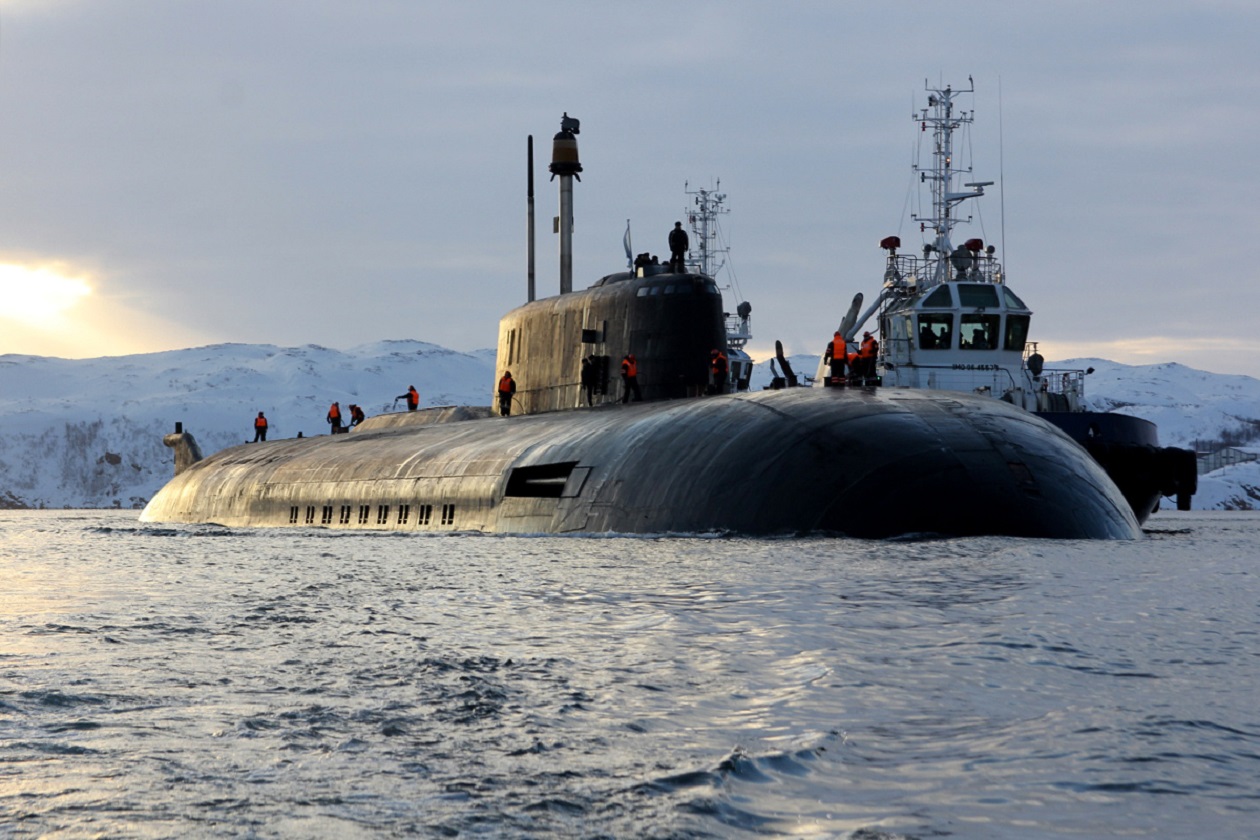
Aircraft Carrier Destroyer: Why the Navy Feared Russia’s Oscar-Class Submarines
Summary: The Oscar-class submarine, a Soviet-era nuclear-powered cruise missile submarine, first entered service in 1980. Originally designed to target NATO aircraft carriers with P-700 Granit missiles, this class includes the Oscar I and the more advanced Oscar II. The Oscar II is longer, featuring enhanced electronics and quieter propulsion. Only two Oscars remain active today. Despite their age, plans for modernization were announced in 2011, with upgrades including replacement of the Granit missiles with newer Kalibr or Oniks missiles. These changes will allow the Oscar-class submarines to remain valuable assets in the Russian navy’s strategic operations.

Oscar-Class Submarines: A Legacy of Soviet Naval Power Continues
The Oscar class is a nuclear-powered cruise missile submarine in use with the Soviet and then Russian navies since 1980. Only two Oscars are still in service today.
Until 2007, when a few Ohio-class ballistic missile submarines were converted to carry cruise missiles, the Oscar was the largest serving cruise missile submarine in the world. The Oscar is the fourth-longest submarine ever, behind only the Soviet Typhoon class, the Russian Borei class, and the American Ohio class.
Introducing the Oscar-Class
The Soviets laid down their first Oscar-class submarine in the mid-1970s. First commissioned in 1980, the original Oscar class, known as Project 949, would not last long. By 1982, the Soviets had introduced an upgraded version, the Project 949A, aka the Oscar II.
Both Oscars were designed to attack NATO aircraft carrier battle groups using long-range P-700 Granit anti-ship missiles. The submarine was outfitted with a so-called Punch Bowl antenna that allowed for targeting data via a EORSAT satellite.
The Oscar measures 508 feet long, with a 59-foot beam and a 29-foot draught. When submerged, it displaces 19,400 tons. With a nuclear power plant consisting of two pressurized water-cooled reactors and two steam turbines driving two shafts, the Oscar produces 73,070 kilowatts, or 97,990 horsepower. The Oscar hits a top speed of 32 knots when submerged, and it can operate for 120 days at a time at a test depth of 600 meters.
Transitioning from the Oscar I to the Oscar II
Only two Oscar Is were made, at Severodvinsk between 1975 and 1982. Both were assigned to the Soviet Northern Fleet. The two submarines were the K-525 and the K-206, laid down in 1975 and 1979, respectively.

Adjustments were made to the Oscar early in the program. Eleven Oscar IIs were made, also at Severodvinsk. Five were assigned to the Soviet Northern Fleet. The Oscar II is 33 feet longer than the Oscar I, allowing for more space and buoyancy, as well as improved electronics and quieter propulsion. The Oscar II also features a larger fin. Its propeller has seven blades rather than four.
The Oscars are of double-hull construction, like all post-World War II Soviet submarines. The Oscar has an open bridge on top of the sail, and an enclosed bridge forward and below the open bridge, for use in inclement weather. The submarine features a distinctive bulge at the top of the fin. Large doors on either side of the fin reach the bulge. The Federation of American Scientists speculates that the doors cover an emergency crew escape capsule that can accommodate 110 people.
The Future of the Oscar-Class Submarines
The Russian Defense Ministry announced in 2011 that the Oscar would be modernized, and that the P-700 Granit anti-ship missiles would be replaced with newer 3M-54 Kalibr or P-800 Oniks. The upgrade would require no design changes to the hull, because the newer missiles can fit into the Oscar’s existing missile launchers.

The modernization suggests that even after four decades at sea, the Oscar will continue serving.
About the Author: Harrison Kass
Harrison Kass is a defense and national security writer with over 1,000 total pieces on issues involving global affairs. An attorney, pilot, guitarist, and minor pro hockey player, Harrison joined the US Air Force as a Pilot Trainee but was medically discharged. Harrison holds a BA from Lake Forest College, a JD from the University of Oregon, and an MA from New York University. Harrison listens to Dokken.
All images are Creative Commons.


